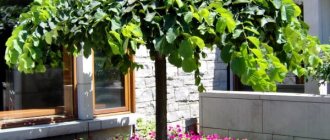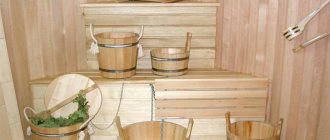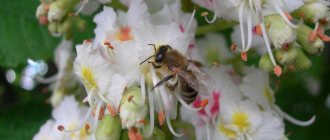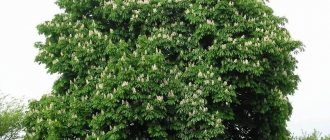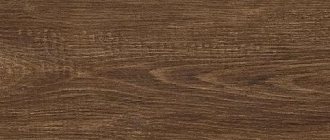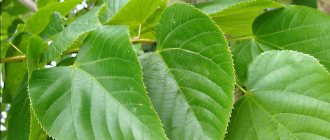Legends can be made about the benefits of chestnuts. The magic nut has a beneficial effect on many organs in the human body. If you take into account the contraindications for its use and follow the dosage approved by doctors, this product can work a real miracle with the body. However, it is important to remember that everything is good in moderation, and excess consumption of chestnuts can be harmful to the body.
Today KP will reveal the secret component of the chestnut and tell you how it can help in the fight against COVID-19.
Areas of distribution
Chestnut (translated into English as “chestnut”) belongs to the Beech family. An interesting fact is that this tree grows in three separate areas: East Asia, the Mediterranean and the Atlantic coast of the United States. The largest edible chestnuts are found in France, Italy and Spain.
Chestnut prefers mountain slopes and brown soils of moderate humidity, lying on lime-free rocks. Does not like marshy and dry soils. Grows well and quickly in warm temperate climates. It differs from the stump in its pronounced growth ability, which is preserved even in old plants.
This tree has ancient origins, as evidenced by archaeological finds found in Tertiary and Cretaceous deposits. The modern classification identifies 10 representatives of the genus. The most popular:
- European;
- crenate;
- short;
- Segyu.
Many people believe that edible chestnuts are the trees that grow everywhere in parks and squares of big cities. However, this opinion is wrong. Horse chestnut, unlike its edible relative, belongs to the Sapindaceae family. Its fruits have a similar name, but they cannot be eaten. They have a bitter taste and are practically devoid of nutritional value, although they are used in medicinal practice.
Traditional medicine recipes
First of all, it is worth noting that treatment can be carried out using pharmaceutical drugs. The most famous of them is Aescusanus. For internal use, dragees, solution, tablets are used. For external use – gel and cream. Horse chestnut ointment is considered a cheap and affordable remedy, which is used mainly for venous congestion and varicose veins of the legs.
Decoction
For inflammation of the veins, you can also use a decoction, which is easy to prepare at home. The same decoction is used for hemorrhoids. It is beneficial for anemia, increased shortness of breath, rheumatism, and gallbladder pathologies. It also helps improve digestion. In gynecology, the decoction can be used for douching for thrush.
Recipe for treatment with horse chestnut in the form of a decoction:
- take 5 g of flowers, 5 g of bark;
- chop everything, place the raw materials in an enamel container;
- pour 200 ml of boiling water;
- Boil over low heat for half an hour, then strain through several layers of gauze;
- fill with water to the initial volume.
It is recommended to drink 1 tablespoon once a day, on the third day - 2 tablespoons once a day. A simple recipe for horse chestnut for varicose veins should be used for 8 weeks, for the treatment of hemorrhoids - from 1 to 4 weeks.
And the recipe for a decoction for menopausal symptoms looks like this: 15g of fresh chestnut skins are poured into 1 glass of water. This mixture is boiled for 15 minutes, left for an hour and a half. The decoction is used as a means for washing, eliminating dryness and itching, one of the unpleasant symptoms of menopause.
Infusion
It's not difficult to do. You need to take 1 teaspoon of ground bark, pour 2 glasses of cool water (pre-boiled), leave the mixture for 9 hours. After preparing the mixture, strain and drink 2 tablespoons four times a day.
The infusion is used in the treatment of gallbladder ailments, intestinal spasms and kidney pathologies. It is also used in the treatment of respiratory diseases.
Kvass made from chestnut fruits is good for the stomach
The so-called chestnut kvass is often used. 25-30 fruits should be cut in half, put them in a gauze net, with a not very large stone inserted into it. Move this mesh into a jar, the volume of the jar is 3-5 liters, pour 2.5 liters of cold water (boiled) into it. Sprinkle 1 cup granulated sugar and 1 cup whey on top. The gauze mesh should be located exactly at the bottom of the container.
Cover it all with a triple layer of gauze and hide it in a dark place. The drink can be drunk after 2 weeks. Just don’t forget to strain and filter the composition. Drink 1 glass for a month. The drink not only copes well with thirst, it helps remove toxins from tissues and restore the epithelium of the gastrointestinal tract.
Alcohol tincture
To prepare horse chestnut tincture, do the following. Cut the chestnut seeds into 4 parts, fill the jar with them, pour vodka on top, and close the jar with a lid. The remedy must be infused in the dark for 3 weeks. Then moisten a clean cloth with the tincture and use it as a compress. In this way, horse chestnut polyarthritis, arthrosis, and rheumatism are treated.
This video clearly shows how to make a tincture.
Ointment
Not only the pharmacy version of the medicinal ointment for varicose veins is known. If you take 5 g of dried flowers of the plant, 2 tbsp. l. sage, 3 tbsp. l. pharmaceutical chamomile, 1.5 tbsp. l. Potato starch will make an ideal base for an anti-varicose vein remedy. Add 200 g of chicken fat to the base and heat the mixture in a water bath for 3 hours. Then it needs to be infused for half a day and then boiled again. Subsequently, the composition is filtered, and the inflamed veins are periodically lubricated with it.
Juice
Flowers make healthy juice
Collect fresh flowers, immerse them in a blender, squeeze out the juice through 2 layers of gauze. Drink the juice 25 drops diluted in 1 tablespoon of water. It is recommended to do this twice a day. The remedy is considered valuable in the treatment of varicose veins and inflammation of hemorrhoids. It is used externally as a lubricant for joints for gout and arthritis (in consultation with a doctor).
Oil
Chestnut oil is considered an excellent aid for weight loss. Take 1 glass of good olive oil, add 100 ground chestnuts and 100 g of finely chopped basil into it. This medicine needs to be infused for 1.5 weeks. Strain and add a little grapefruit essential oil. So you can make an excellent anti-cellulite skin massage product with your own hands.
chestnut tree
It will be useful for everyone to know what a chestnut looks like. Since many have heard about it, but few understand how this plant differs in appearance from other trees.
So, representatives of the Kashtan genus have the following characteristics:
- Fast-growing deciduous shrubs or trees reaching a height of 2-50 m.
- Mature trunks are powerful, straight, brown-brown in color, thick bark is covered with deep grooves.
- The leaves are simple, up to 25 cm in length, with a relatively short petiole. They are located on branches in two rows, forming peculiar spirals. They have an oblong-oval or broadly lanceolate shape and are colored dark green. The base is wedge-shaped or heart-shaped with a pointed apex. The surface of the leaf blade is leathery, the edges are rough-toothed.
- Chestnuts are monoecious plants. White-cream flowers are collected in erect pyramidal spike-shaped inflorescences 5-15 cm long. Most of them are staminate. The plant is pollinated by insects. In spring, chestnuts serve as good honey plants.
- It blooms in May, and the first fruits appear in autumn.
Walnut chestnut
Chestnut fruits have the following description:
- They are spherical in shape.
- They are surrounded by a shell, which is densely strewn with hard spines on the outside.
- Under the peel there are 3-4, rarely 7 nuts.
- When ripe, the shell changes color from green to brown and usually opens with three wings.
- The fruits themselves are ovoid, with a smooth brown surface. The flat side touches each other. Narrowed towards the top, with remnants of columns and perianth.
- Hidden under the brown skin is a large light cream embryo (up to 6 cm in diameter). The cotyledons of the fruit are fleshy, rich in starch, proteins, and sugars.
How to distinguish edible chestnut
You need to know the difference between the fruits of edible chestnut and horse chestnut. Because the latter cannot be eaten. After all, they not only taste bitter, but also contain toxic compounds.
| Adobe Acrobat document (271 kb) |
Despite the similarity in name, these plants have a lot of differences; they differ in the shape of the leaves, the structure of the inflorescences and the appearance of the seeds. So here's the horse chestnut:
- The leaves are smoother, serrated, folded together into a huge fan of 5-7 pieces.
- The flowering is very lush, and therefore chestnuts are often used as ornamental plants.
- The plus is a pronounced green color, with tubercles and sparse spines.
Description
The plant belongs to the beech family. It appeared in Europe in the 15th century. It was brought and raised by the botanist Lucloz. The fruits were used as animal feed.
Later, scientists discovered the medicinal properties of the fruits, leaves, flowers and bark. This knowledge was used by pharmacists and traditional healers. Wood is used to create furniture. In terms of strength and appearance, it is similar to oak. The girth of a tree trunk can be up to 1 meter.
Chestnut can grow up to 30 years, and some varieties can grow up to 500 years. The tree has beautiful large leaves with jagged carvings along the edges. It blooms in May-June. Large inflorescences are made up of small flowers. They have a pleasant aroma.
Meaning and Application
Chestnut wood has similar appearance and properties to oak. The only difference is that its core rays are narrow and inconspicuous. Tree rings are clearly visible. The sapwood is narrow, grayish-white, and the heartwood is dark brown. Chestnut wood is used to make plywood, parquet staves and furniture. Barrels and kegs based on this raw material are ideal for infusing and storing various alcohol-containing drinks.
The wood, bark and leaves of the plant contain 6-14% tannins, which are used in the production of plant extract used for tanning leather.
Since ancient times, chestnut has been popular as a fruit tree. Its varieties - American, sowing and crenate - served as the basis for the development of a large number of valuable varieties. And the low-growing and softest chestnut were involved in the process of hybridization.
Edible chestnut fruits contain large amounts of carbohydrates and proteins. They are fried and baked. They are used to produce flour and confectionery products.
Thanks to its powerful growth and tent-shaped crown, the plant is often used for landscaping parks and gardens. The tree does not like drought because its root system is located near the surface of the earth. Because of this feature, chestnuts are sometimes planted above beer and wine cellars.
In open ground
How to grow a chestnut from a nut so that the tree is well established? Young seedlings should be transplanted into open ground when there is no risk of night frosts. Usually this is the end of May.
How to plant walnut chestnuts in the garden? It must be taken into account that these are large trees. There should be at least 3 meters between seedlings. Only then will the tree have a thick crown, beautiful, long-lasting flowering and tasty fruits. The soil can be any, but it is advisable to choose black soil.
A bright place is required for planting, but direct rays of the sun should not fall on the seedlings. The planting hole must be suitable for the root system. The soil from the hole must be mixed with humus and sand in an amount of 2:1:1 and add 500 g of slaked lime.
A small amount of phosphorus-potassium fertilizers should be added to the wells. The bottom of the holes should be drained with pebbles, crushed stone or sand. The size of the drainage layer is 10 cm. Planting must be done carefully so as not to damage the tap root:
- The prepared soil is poured into the hole and needs to be moistened.
- The seedling should be installed and covered with soil.
- The earth is compacted and the chestnut is watered.
For high-quality rooting of a young tree, it must be covered with a paper bag. After a few days it can be removed. These are all the nuances of how to grow a chestnut from a nut.
Seedlings must be protected from winds and animals. The young tree should be fenced with pegs and tied with ribbon. During windy weather, the plant is tied to a support to prevent damage to the fragile trunk.
Chestnut grows slowly, so patience is required. In the 2nd year, the tree will add only 20-25 cm. But already in the 5th year, with quality care, the plant grows up to 1.5 meters. A lush crown is formed in the 10th year. To stimulate its formation, pruning is needed.
Composition and nutritional value
The beneficial properties of chestnut fruits are due to their chemical composition. Its main part is carbohydrates (starch). Therefore, nuts have high nutritional value. The starch content in them is comparable to rice and potatoes.
Just 100 gr. product accounts for:
- 1.6 gr. proteins;
- 1.25 gr. fats;
- 44 gr. carbohydrates.
The energy value of chestnut fruit depends on the processing method:
- fresh - 166 kcal;
- fried - 182 kcal;
- boiled - 131 kcal;
- steamed - 56 kcal.
Chestnut fruits contain the following health benefits:
- dietary fiber (3.5%);
- sugar (17%);
- tannins (about 14%);
- vitamins B, C and PP;
- minerals (calcium, phosphorus, potassium, magnesium, sodium, zinc, copper, iron);
- malic, lactic and citric acid;
- fatty acid;
- flavonoids and pectins.
The sugar content may vary depending on the stage of maturity at which the fruit was harvested. The nut reaches its maximum performance 2-3 weeks before harvest.
It’s not just the fruits that have beneficial properties. The bark and branches contain oils, tannins, fatty acids and glycosides. The foliage contains vitamin C, K, P, pectins, flavonoids. These parts of the chestnut are in demand in the chemical, cosmetic and pharmaceutical industries.
Conditions
It is necessary to comply with the conditions for growing chestnut. It is necessary to stratify the seeds. When collecting nuts in late autumn and planting them in open ground, you do not need to do anything. And in indoor conditions you need to independently stratify the seeds.
When the harvest is complete, the nuts should be placed in a container with sand and put in a cool place - in the refrigerator or basement. Gardeners advise burying a container of fruits in the garden under the snow. The nuts can remain there until spring. They should be taken out a week before planting.
Beneficial properties of chestnut nuts
Chestnuts have a number of beneficial properties that are especially valued in folk medicine. The unique composition provides the fruit with antiseptic, wound-healing, astringent and anti-inflammatory properties.
Medicines and preparations based on nuts stimulate blood flow, improve blood composition, normalize blood pressure, and stimulate brain function. Fruits also help the body recover faster from excessive physical and mental stress.
Chestnuts are needed for:
- relieving swelling;
- suppression of fatigue;
- improving liver function;
- easier breathing for colds, bronchitis, respiratory infections, etc.;
- treatment of varicose veins, thrombophlebitis, inflamed joints;
- relieving pain and inflammation from hemorrhoids;
- solutions to various gynecological problems;
- elimination of bleeding, rapid healing of external wounds.
Nuts are used as auxiliary elements for massage. Due to the property of chestnuts to retain heat, the fruits are used in warming up. And decoctions based on them serve as an additional remedy in the treatment of cough, varicose veins, bronchitis, rheumatism, atherosclerosis and diseases caused by poor blood circulation in the pelvic area.
Esotericists advise carrying chestnuts in your pockets to relieve joint pain and inflammation in the body. And beads made from small nuts, in their opinion, improve the functions of the thyroid gland and heart.
Difficulties in growing
Even with high-quality care, chestnut trees can develop pests and diseases. This makes growing the tree more difficult, which can negatively affect the entire job.
Usually the following appears on a chestnut:
- wood mite;
- chestnut moth;
- powdery mildew.
For prevention, trees need to be sprayed with disinfectants 2 times a month. Powdery mildew is not difficult to identify. It appears as dark or white spots on the leaves. Phosphorus fertilizers will significantly reduce the risk of infection. Pest control agents are used that are less toxic and do not harm bees.
Chestnut trees with edible nuts are special. They are beautiful and useful. With quality care, fruiting will begin in 7-8 years. To avoid mistakes when planting, you need to follow the recommendations of experienced gardeners. It should be taken into account that chestnuts require special care at a young age.
Hazardous properties
Despite all the benefits that were discussed in the article, chestnut nut is a strong allergen, so individual intolerance should be ruled out before use. For the same reason, fruits are not recommended for young children, pregnant and nursing mothers.
Due to the active effect of chestnuts on the circulatory system, their excessive consumption can provoke seizures. Direct contraindications to the use of fruits are:
- low blood pressure;
- poor blood clotting;
- gastritis;
- menstruation disorders;
- thrombocytopenia;
- kidney diseases.
The absence of side effects is not a reason to abuse nuts. It is not uncommon to experience increased gas formation and stool upset when overeating.
Selection of planting material
How to grow chestnut from a nut? To eliminate mistakes, it is advisable to follow the recommendations of specialists. Only fallen chestnut fruits should be selected. They are suitable for further germination.
The fruits should have a smooth and beautiful appearance, without damage or soft spots. Need hard chestnuts. If you plan to grow 1-2 trees, you will need 5 nuts. Not all germinate; some may die in the garden.
It is advisable to plant in the fall, when the fruits are ripe. It is difficult to preserve nuts until spring without loss. They may dry out and lose their viability. If this option is not available, chestnuts are stored in a bag of damp sand until spring.
Losing weight with chestnut
Horse chestnut is effective for weight loss and is intended exclusively for external use. The active substances in its composition improve blood flow and lymphatic drainage, which perfectly relieves swelling and cellulite.
The greatest results can be achieved if you use plant-based products in combination with physical exercise and anti-cellulite massage.
Descriptions of recipes with chestnuts look like this:
- Grind the dry bark to a powder.
- Mix with oil and apply before anti-cellulite massage. The raw material in this case will perform an exfoliating and stimulating function.
- If desired, you can add chamomile decoction and green tea infusion to the product. This will significantly enhance its effect.
It is better to prepare the composition in small portions. You can store it in the refrigerator, but for a short time. Otherwise, the mixture will spoil and begin to release toxins.
Problem areas need to be massaged especially carefully. Before the procedure, it is advisable to clean them of skin secretions.
If you do this massage every two days for a month, gradually increasing the portion of the anti-cellulite mixture, the result will not be long in coming. The greatest effect can be obtained if you take a bath before each session.
Excellent source of antioxidants
Chestnuts contain many antioxidants that are important for your health.
These antioxidants include:
- vitamin C
- gallic acid
- ellagic acid
- tannins
- alkaloids
- various polyphenols
- lutein
- zeaxanthin
The latter two antioxidants accumulate in the retina of your eyes and protect it from damage from blue light (, ).
Antioxidants are compounds that help protect your cells from damage from unstable molecules called free radicals.
High levels of free radicals can cause a condition called oxidative stress. This may increase your risk of developing chronic diseases such as heart disease, diabetes, and cancer (,).
Additionally, studies have shown that various antioxidants found in chestnuts, such as gallic acid and ellagic acid, may help reduce the risk of heart disease, reduce insulin resistance, and suppress the growth and spread of tumors (, , ).
Summary:
Chestnuts contain many antioxidants such as vitamin C, gallic acid, ellagic acid, tannins and others. These antioxidants help protect your cells from free radical damage, which is linked to numerous chronic diseases.


